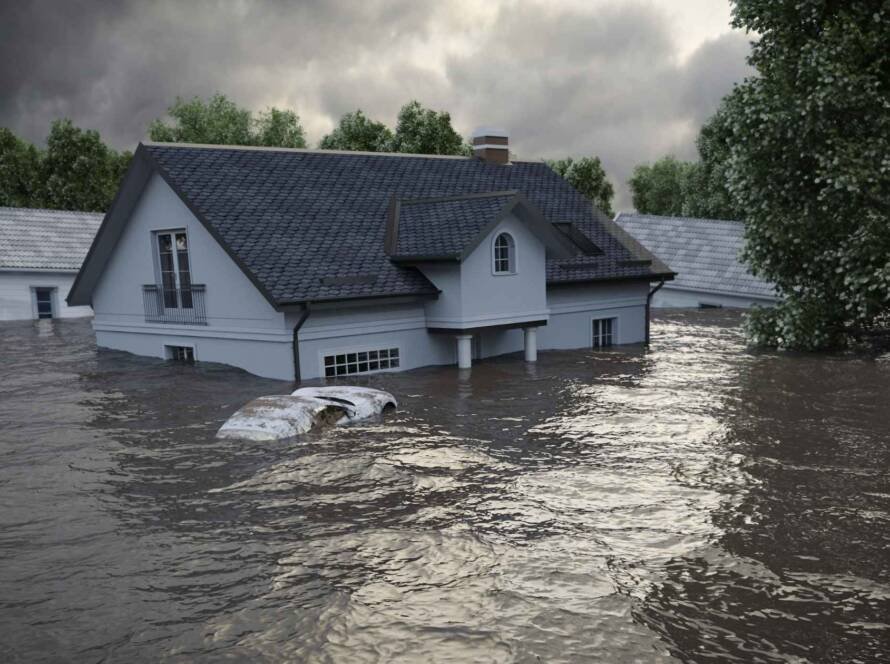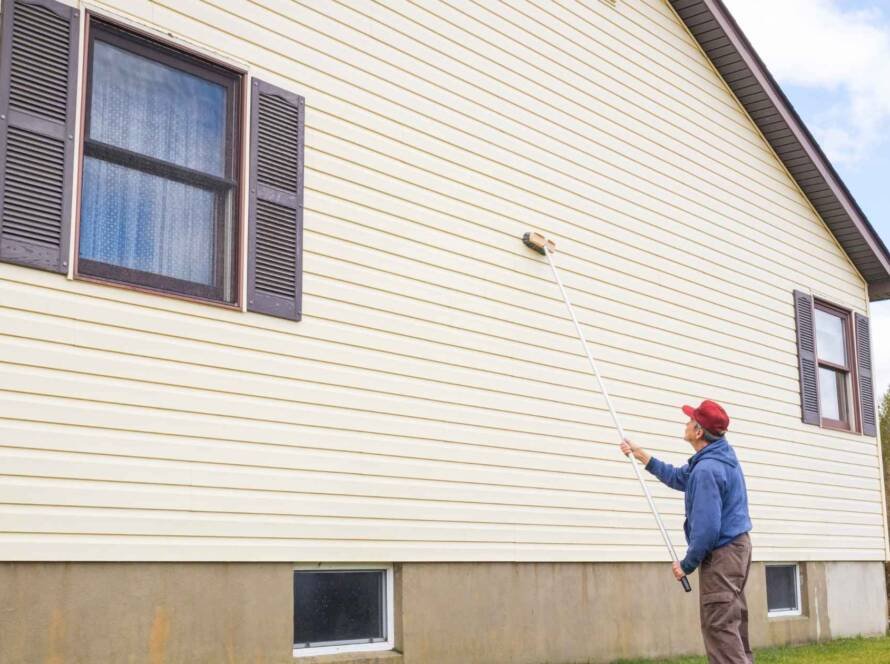Introduction
When it comes to landscaping and structural integrity in Dallas, retaining walls are essential in managing water flow, preventing erosion, and preserving the overall aesthetic of your property. However, without the proper drainage system, even the best-built retaining wall can become a liability. Excess water buildup behind the wall can cause significant damage, leading to costly repairs. This article will cover why retaining wall drainage is critical and provide step-by-step guidance on how to do it right, ensuring your wall serves its purpose effectively.
At America’s General Contracting, we specialize in building and maintaining retaining walls that not only enhance your landscape but also protect your property from water-related damage. Let’s dive into why proper drainage is vital and how you can ensure your retaining wall is always functioning at its best.
Table of Contents
Section 1: The Importance of Retaining Wall Drainage
Retaining walls are designed to hold back soil and manage water flow. However, without a proper drainage system, they can cause more harm than good. Here’s why retaining wall drainage is so important:
1.1 Prevents Water Buildup
Water naturally flows downhill, and without a way to redirect this water, it will accumulate behind the retaining wall. Over time, this water buildup creates immense pressure against the wall, which can lead to cracking, bowing, or even complete failure of the structure.
1.2 Protects the Integrity of Your Property
Proper drainage keeps excess water away from your foundation, preventing soil erosion and protecting your landscape. In Dallas, where rainfall can be intense and sudden, keeping water from infiltrating your property is essential in safeguarding the value of your home and the integrity of your landscaping.
1.3 Dallas-Specific Concerns
Dallas’ soil type, combined with its occasional heavy rainfall, makes retaining wall drainage especially important. If the water behind your wall cannot escape, it will increase pressure on the wall, making it more prone to damage. Whether you’re dealing with clay-rich soils or more sandy types, drainage systems must be customized to your specific landscape conditions.
At America’s General Contracting, we understand the unique drainage challenges in Dallas. We design retaining walls that are not only structurally sound but also capable of handling local weather conditions efficiently.
Need help with retaining wall drainage in Dallas? Call us at America’s General Contracting for a free consultation.
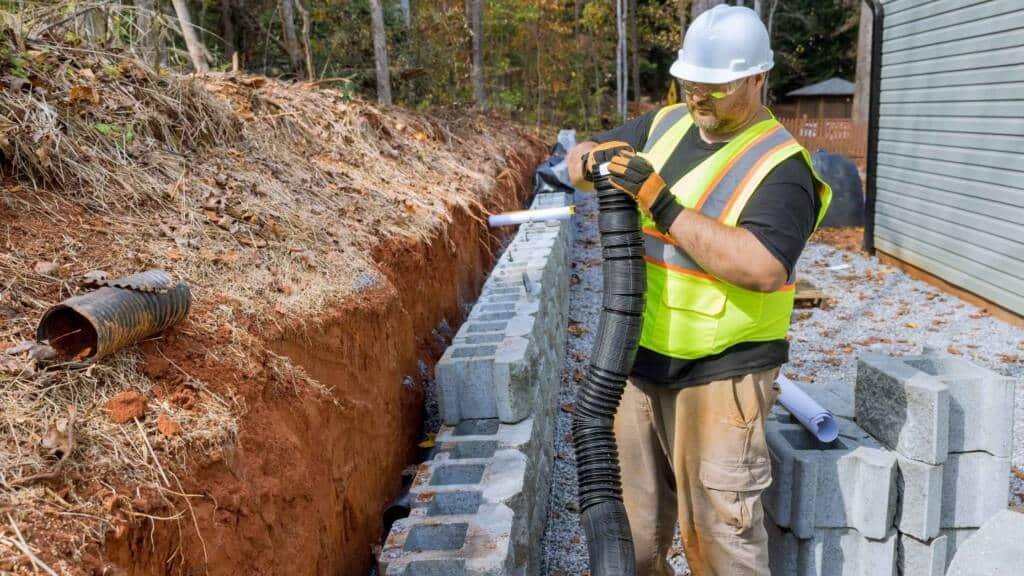
Section 2: Common Drainage Problems with Retaining Walls
While retaining walls can be incredibly effective, they can also be prone to specific drainage issues if not properly designed. Here are some of the most common drainage problems:
2.1 Water Accumulation
Without proper drainage systems, water accumulates behind the wall, which leads to increased hydrostatic pressure. This pressure can crack the wall or cause it to lean over time.
2.2 Poor Soil Conditions
Not all soils drain water efficiently. In Dallas, areas with clay-heavy soil retain moisture, which can make drainage more challenging. When the soil behind the wall doesn’t drain properly, water stays trapped, exacerbating pressure on the wall.
2.3 Lack of Drainage Systems in Older Walls
Many older retaining walls were built without proper drainage solutions. As a result, they’re prone to pooling water, which can undermine the wall’s structural integrity. Without a proper drainage system, the wall becomes less effective and more vulnerable to damage.
Signs of Drainage Issues:
- Puddles behind the wall
- Cracks or leaning walls
- Erosion of soil around the base
Risks:
- Erosion of the surrounding landscape
- Complete structural failure of the wall
- Foundation damage
If you’re noticing any of these signs, it’s time to address your retaining wall drainage. Call America’s General Contracting to evaluate your current system and recommend the best solution.
Section 3: How to Properly Drain a Retaining Wall
To prevent damage and ensure your retaining wall functions as intended, follow these best practices for proper drainage.
3.1 Use of Drainage Pipes
A perforated pipe installed at the base of the retaining wall is one of the most effective ways to redirect water away from the wall. These pipes allow excess water to flow through and out of the wall, preventing buildup behind the structure.
3.2 Gravel Backfill
Filling the space behind the retaining wall with gravel is an essential part of a functional drainage system. Gravel allows water to flow freely behind the wall, reducing pressure and providing a direct path for water to exit the system. This helps ensure the wall stays intact and doesn’t crack under pressure.
3.3 Weep Holes
Weep holes are small openings at the bottom of the retaining wall that allow water to escape. Without weep holes, water will get trapped, increasing the risk of pressure buildup. Ensure these holes are installed at appropriate intervals to promote effective water flow.
3.4 Geotextile Fabric
A geotextile fabric is used to prevent soil from clogging the drainage system. By creating a barrier between the gravel and the soil, the fabric keeps the system functioning efficiently over time.
Steps to Properly Drain a Retaining Wall:
- Install a drainage pipe at the base of the wall to direct water away.
- Fill the space behind the wall with gravel to allow easy water flow.
- Ensure proper grading so that water naturally flows away from the wall.
- Use geotextile fabric to prevent soil from clogging the drainage materials.
Looking for expert help to install a drainage system for your retaining wall? Contact America’s General Contracting for professional installation services.
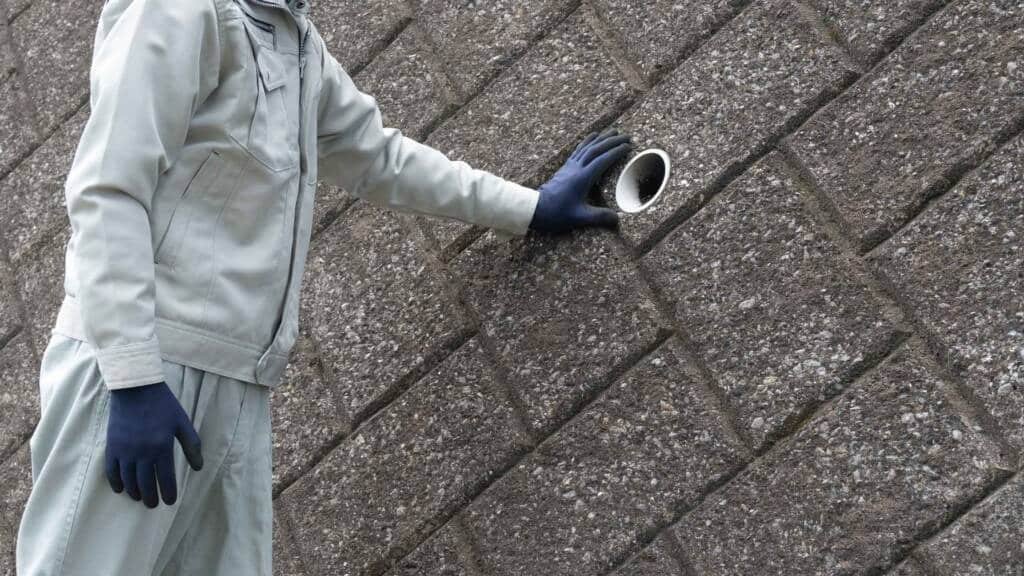
Section 4: Choosing the Right Materials for Drainage
Choosing the right materials for your retaining wall drainage system can make all the difference in its effectiveness. Here’s a breakdown of the best materials to use:
4.1 Perforated Pipes
These pipes are a critical component of any drainage system. Perforated pipes allow water to pass through the wall and away from your property. Ensure you select high-quality pipes to avoid clogging over time.
4.2 Crushed Stone or Gravel
Crushed stone or gravel is perfect for backfilling the space behind the retaining wall. These materials provide excellent drainage properties, allowing water to move freely behind the wall.
4.3 Drainage Mats and Geotextiles
Drainage mats and geotextile fabrics are excellent for preventing soil erosion behind the wall. These materials allow water to pass through while keeping soil in place.
Choosing the Best Materials for Your Landscape:
- Consider soil types: For clay-heavy soils, more extensive drainage systems may be required.
- Evaluate rainfall patterns: Heavier rainfall calls for a more robust drainage solution.
By working with professionals at America’s General Contracting, you can ensure the right materials are selected based on your specific landscape and drainage needs.
Section 5: How America’s General Contracting Can Help
At America’s General Contracting, we are committed to providing expert services tailored to the needs of Dallas homeowners. Our retaining wall drainage solutions are designed to withstand local weather conditions and ensure your wall performs optimally.
5.1 Expert Installation
Our experienced team handles everything from designing your retaining wall to implementing a drainage system that ensures long-term protection. We use only high-quality materials to make sure your wall can handle any challenges posed by the local climate.
5.2 Local Knowledge
As a Dallas-based company, we are familiar with the local soil types and rainfall patterns. We offer customized solutions to meet the specific challenges your landscape may face.
5.3 Ongoing Maintenance
Proper drainage is an ongoing concern, which is why we offer maintenance services to keep your retaining wall system functioning at its best year after year.
Contact America’s General Contracting today for a comprehensive retaining wall drainage solution tailored to your needs.
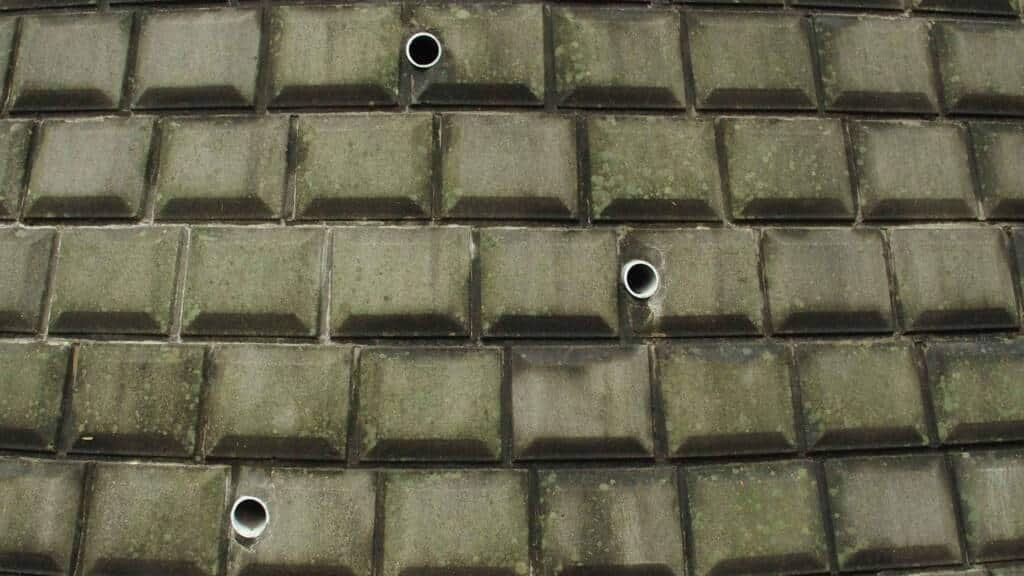
Frequently Asked Questions (FAQ)
1. Do retaining walls need drainage?
Yes, retaining walls need drainage to prevent water buildup behind the wall. If water accumulates, it creates pressure that can damage the wall, leading to cracks, bowing, or even collapse. Proper drainage ensures water flows away from the wall, preserving its structural integrity.
2. Does a 2-foot retaining wall need drainage?
Yes, even a 2-foot retaining wall needs drainage. While the height may seem relatively small, the pressure exerted by water can still damage the wall if there’s no drainage system. Ensuring proper drainage helps maintain the wall’s stability and prevents long-term damage.
3. Does a retaining wall need drainage?
Absolutely. Without a drainage system, water can collect behind the retaining wall, increasing pressure and leading to structural issues. Drainage prevents water from causing erosion, cracking, or weakening the wall over time, ensuring its effectiveness in holding back soil.
4. How to build a retaining wall with drainage?
To build a retaining wall with proper drainage, you should:
- Install a perforated drainage pipe at the base of the wall to direct water away.
- Backfill the wall with gravel or crushed stone to allow water to flow freely.
- Use geotextile fabric to prevent soil from clogging the drainage system.
- Ensure the wall is properly graded to direct water away from the foundation.
By following these steps, you ensure the retaining wall remains stable and functional for years.
5. What are the methods of drainage for retaining walls?
There are several methods for draining retaining walls:
- Perforated Drainage Pipes: Installed at the base to allow water to flow through.
- Weep Holes: Small openings at the bottom of the wall to allow water to escape.
- Gravel Backfill: Provides an open space behind the wall to allow water movement.
- Geotextile Fabric: Prevents soil from clogging the drainage system while allowing water to flow.
Each of these methods works together to ensure water is properly diverted away from the wall.
6. What material is used for drainage behind retaining walls?
The most common materials used for drainage behind retaining walls include:
- Perforated Drainage Pipes: These pipes are essential in redirecting water away from the wall.
- Gravel or Crushed Stone: These materials provide adequate space for water to flow and reduce pressure on the wall.
- Geotextile Fabric: This material prevents soil from infiltrating the drainage system and ensures long-term functionality.
These materials help to efficiently manage water and prevent damage to the wall.
7. What is the best drain pipe for a retaining wall?
The best drain pipe for a retaining wall is a perforated PVC or corrugated pipe. These pipes allow water to flow freely through the wall while preventing the buildup of pressure. The perforations let water pass through while preventing larger debris from clogging the pipe. Ensure the pipe is placed at the base of the retaining wall for optimal drainage.
Conclusion
Proper drainage for your retaining wall is essential in protecting your property from water damage and maintaining the structural integrity of your landscaping. In Dallas, where soil conditions and weather patterns can be unpredictable, a well-designed drainage system ensures your retaining wall stays functional and durable for years.
If you need help designing, building, or maintaining a retaining wall in Dallas, reach out to America’s General Contracting. We’re here to provide expert solutions and keep your property safe from water-related damage. Don’t wait—contact us today!


